Robotic Arms: Features and Applications
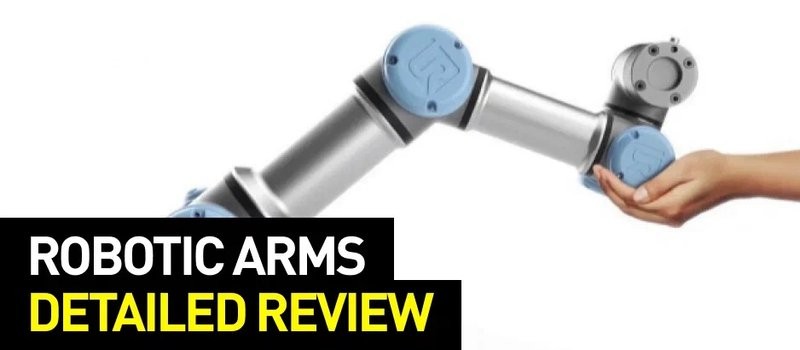
The growing need to reduce operating costs in factories is the main driving force behind the global robotics market. Cost reduction can be achieved by reducing errors in the production process, waste of raw materials, and the number of accidents, increasing the technological flexibility and productivity of the enterprise, improving working conditions and safety level. And that becomes possible with robot manipulators, which are used in most industries due to their ability to perform complex repetitive tasks with high accuracy even in hazardous conditions.
This is Top 3D Shop, and in this article, we will talk about robotic manipulators and examples of their application.
What is a robotic arm?

Credit: abb.com
A robotic arm is a type of industrial robot with functions similar to those of a human hand. The manipulator can be either an independent device or be part of a robotic complex. Its segments have connections that allow rotational (for example, in an articulated robot) or linear motion.
Read on to learn about the applications of robotic arms in detail.

Credit: habr.com
Application overview

Credit: wikipedia.org
Robotic manipulators can be divided according to their areas of application in production, in descending order of their presence in industries.
Automotive industry

Credit: technavio.com
For example, the Tesla plant is located on an area of 464.5 thousand m² and has more than 160 robots working on it, with the level of automation constantly increasing — robots install batteries, engines, the interior of cars, cables.
Electronics and electrical engineering

Credit: yaskawa.eu.com
The Yaskawa Motoman MH12 compact six-axis robotic arm assembles a computer's hard disk using a removable gripper.
Metalworking, mechanical engineering
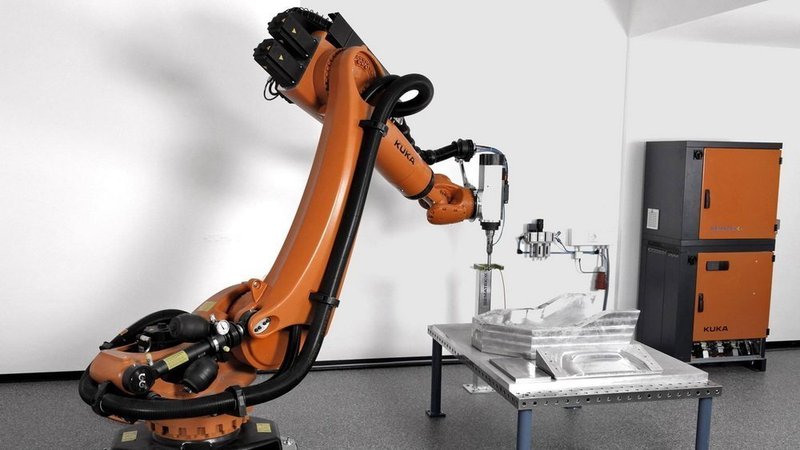
Credit: kuka.com
Grinding and finishing of milled molding tools such as car body dies or composite and plastic injection molds.
Chemical industry

Credit: robohub.org
Kawasaki Heavy Industries developed the world's first stainless steel seven-degree-of-freedom robot. It will be used in drug detection and the chemical industry to automate experiments that use hazardous substances. Thanks to its stainless steel housing, it can be sterilized with hydrogen peroxide.
Medicine and pharmaceuticals
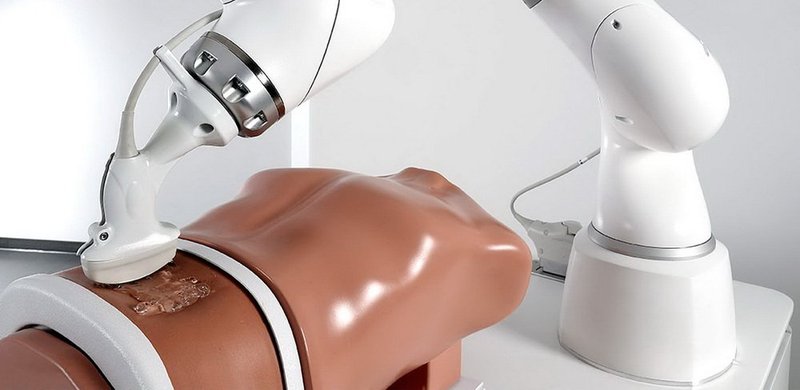
Credit: www.kuka.com
The KUKA LBR Med is a robotic medical innovation. It is based on the accurate and lightweight LBR iiwa robot. With its sensory capabilities to increase safety, fast learning, and easy control, it is useful as an OR assistant.
The LBR Med is extremely sensitive. Thanks to torque sensors in the joint, the robot carefully touches the patient and automatically moves to the side when the doctor touches the device itself. On the other hand, it is very helpful for complex manipulations. Thanks to a special biocompatible coating, the robot ensures absolute sterility of the working surface.
Food and agriculture

Credit: indicator.ru
The Vegebot system for autonomous lettuce harvesting includes a portable computer with control software, the standard UR10 robotic arm with six degrees of freedom (DOF), two cameras, and an adjustable “hand” for different types of vegetables placed on a mobile platform.
Education
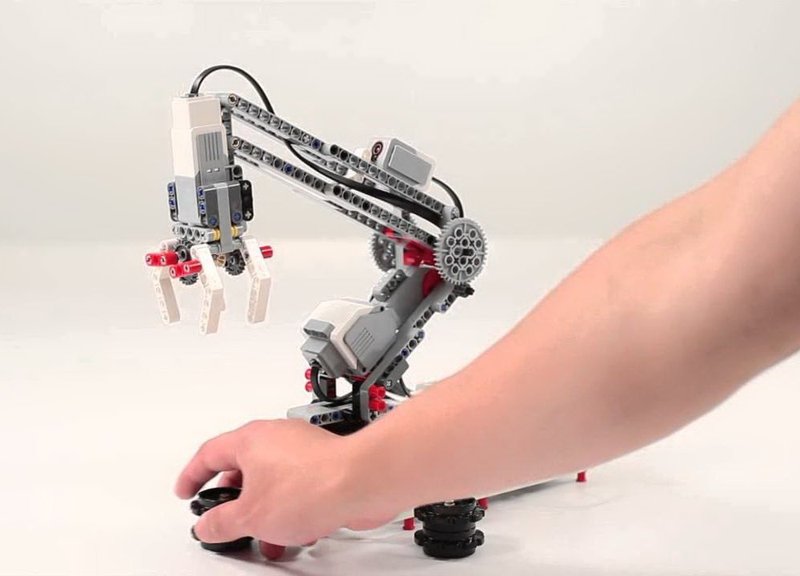
Credit: education.lego.com
The LEGO Mindstorms is a well-designed series of robotics learning tools. The extensive kitting capabilities and ease of assembly allow for a complete robotics lesson (introduction, assembly, programming, and testing) in a surprisingly short time.
Other areas

Credit: jerusalemhouseministries.net
The US Marine Corps is in the process of deploying the Usmc Eod Robot, a small, mobile robotic system that allows Marines to disarm explosive ordnance (EOD) and defuse improvised explosive devices. The robot can use its “arms” to climb small obstacles such as stairs.
How to choose a robotic manipulator
When choosing robotic manipulators for your production, you should pay attention to the following parameters:
- purpose
- form factor, weight, electrical specs
- number and size of "arms", radius of action, freedom degree
- payload
- path and static repeatability
- terms of use
Types of robot manipulators

Credit: nasa.gov
There is no unified classification of robotic manipulators. However, we can talk about the established division of robots in the market by a number of parameters.
By type of installation
Stationary

Credit: symmetrymagazine.org
This is the most common type of robotic manipulator on the market. Installation is possible at any angle. Such devices feature a high payload with a wide working range, as well as a large degree of freedom and versatility.
Mobile
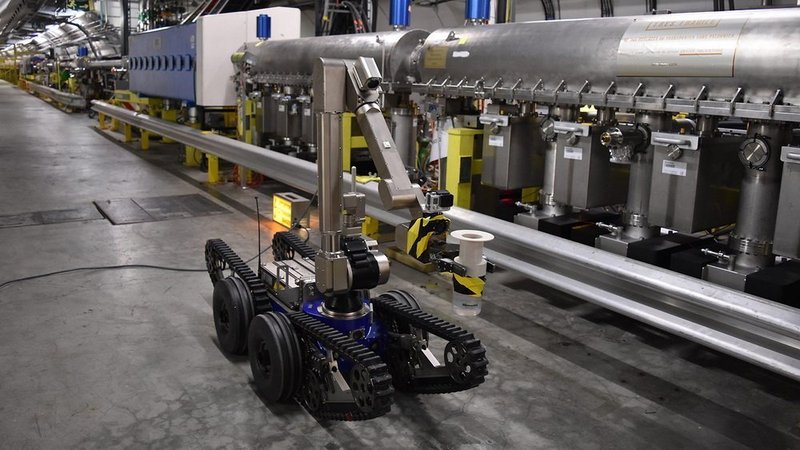
Credit: symmetrymagazine.org
Such robots are not associated with any specific place of installation and can perform tasks both at any point of production and at a considerable distance. Mobile manipulators can be powered either permanently or autonomously, allowing for all-weather or underwater performance and operation in harsh or hazardous conditions, for example, mine clearance. Manipulators of this type are characterized by low weight and physical dimensions, they can be compactly stacked for transportation, being resistant to collisions with obstacles. Often, such robots are equipped with artificial intelligence systems. Their disadvantages include high cost and low payload (although there are exceptions).
Vertical (floor or ceiling mount)
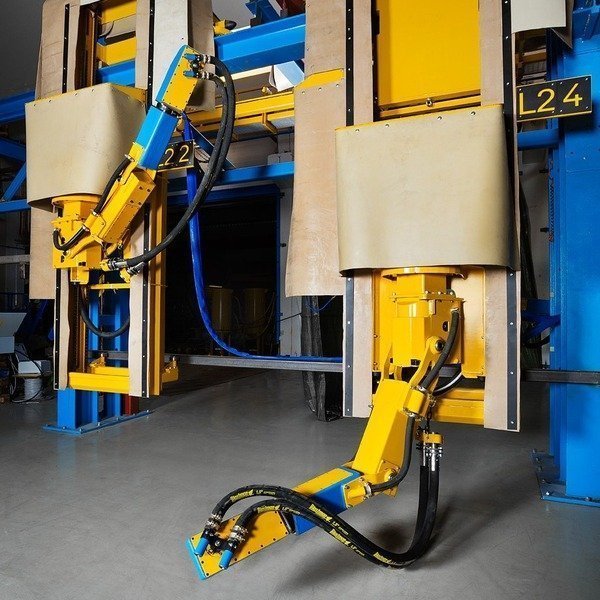
Credit: virtualmarket.innotrans.de
Whenever space is limited, you can use the Blastman 7-axis wall-mount robot. If necessary, it is possible to install two robots working on opposite walls. The main movements of wall-mounted robots are longitudinal and vertical. Sizes and designs can be tailored to the needs of the client.
Horizontal (portal)
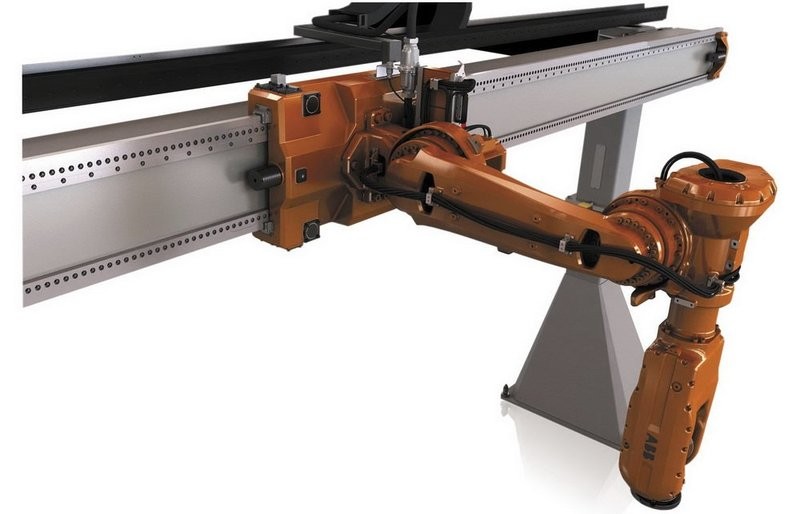
Credit: directindustry.com
This is a demonstration of the ABB 6620LX gantry manipulator tending to multiple machines. The length of the track for the robot can be up to 27 meters. When you need flexible service for three or more machines, this is the most economical solution.
By type of application
By the type of application, robots are divided into autonomous, working according to a given program without human participation, and collaborative, working together with a person and directly controlled by the operator.
Manual control

Credit: kuka.com
Due to its sensitivity, the KUKA LBR iiwa can assemble flexible parts together with a person or independently.
Programmable (stand-alone)

Credit: directindustry.com
The Yaskawa Motoman is a unique compact 7-axis robot that is optimal for use in the automotive industry. The manipulator can be located in close proximity to objects to be processed and other robots, which allows for flexible production lines with a high density of placement. Using this device will shorten the size of the production line and reduce the welding time.
Collaborative robots (cobots)

Credit: blog.robotiq.com
Cobots are designed to interact with people in a shared workspace. Devices of this type are subject to increased safety requirements, implying the impossibility of injuring a person.
By functionality:
Soldering and welding

Credit: santanderpyme.com.mx
Welding robots combine unparalleled quality with incredible arc stability at very low currents and high weld speeds.
Computer controlled arc parameters allow setting optimal welding conditions along the length of the weld, reducing the stress as the plate heats up during the weld cycle. Welding robots are often equipped with a rotating table that allows welding parts in any position.
Impact treatment

Credit: kuka.com
Impact treatment smoothes milled surfaces, strengthens the material structure, and evenly distributes internal stresses. This allows for a surface smoothness of about 0.1 microns, which would not be possible with milling alone. Cold forging can increase the hardness of the material by up to 30%. Additional surface processing can often be entirely omitted. The automated hammering process replaces manual grinding and polishing operations.
Assembly and disassembly
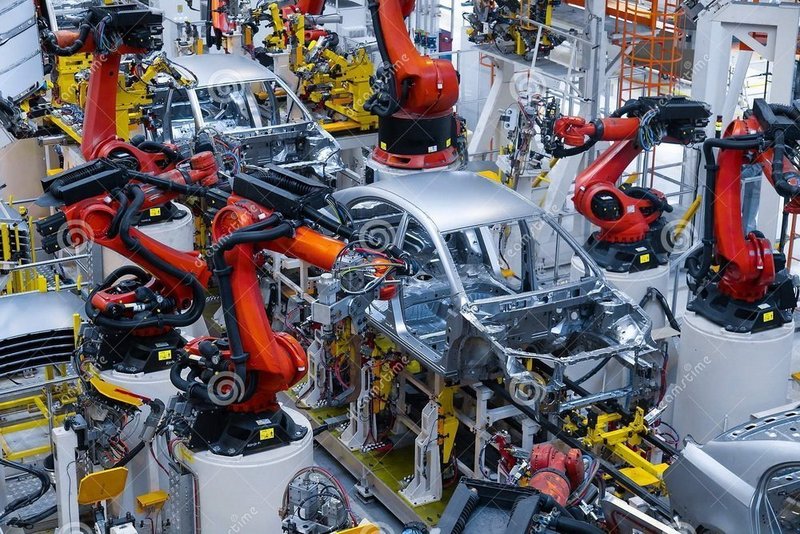
Credit: dreamstime.com
Robot manipulators are used in the assembly of products of any size.
When working with large-sized parts, robots, due to the exclusion of human labor, accelerate the production process and allow avoiding the use of additional lifting mechanisms. In the production of small items, they significantly increase the speed, accuracy, and quality of work.
Cleaning, painting, and dispensing

Credit: phys.org
Removing old paint or applying new one usually requires a team of several people. A robotic arm that can clean external surfaces with high pressure water jet or sandblasting and apply new layers of paint requires a maximum of one operator. In the case when the processing is carried out in an industrial environment, one operator can control the whole robotic complex at once. Unlike a human, with a robot you can be sure that the paint will be applied strictly in accordance with the required technology and perfectly even.
Milling and grinding

Credit: welt.de
A simple and flexible automated milling unit located in a small area, it combines the ideal precision of a milling and grinding machine with the flexibility of a 6-axis manipulator.
Cutting and processing
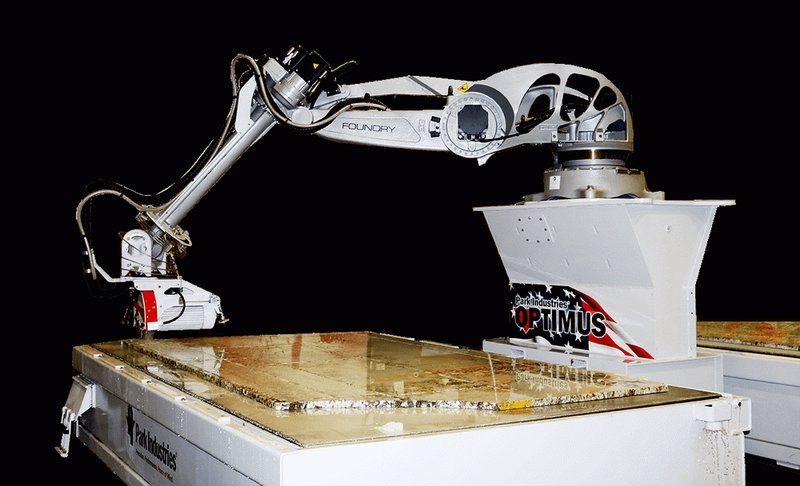
Credit: parkindustries.com
Cutting and processing any material is a very traumatic job for humans. Robot manipulators are free of this and many other human shortcomings; in addition, they are able to perform this work with the highest accuracy, minimizing material loss and shortening processing time.
Construction

Credit: fbr.com.au
Such manipulators can build objects with a high degree of accuracy, minimizing the loss of bricks and work 24 hours a day in any weather, without stopping to dry the mortar, since they use a special polymer glue instead of cement mortar.
Other functions

Credit: theengineer.co.uk
It is simply impossible to list all the areas where robotic manipulators can be used. But it is safe to say that there are no areas of our life where the use of robots would be impossible. For example, this medical robot successfully performed eye surgery on a 70-year-old patient through a 1 mm incision.
Based on payload
0–20 kg
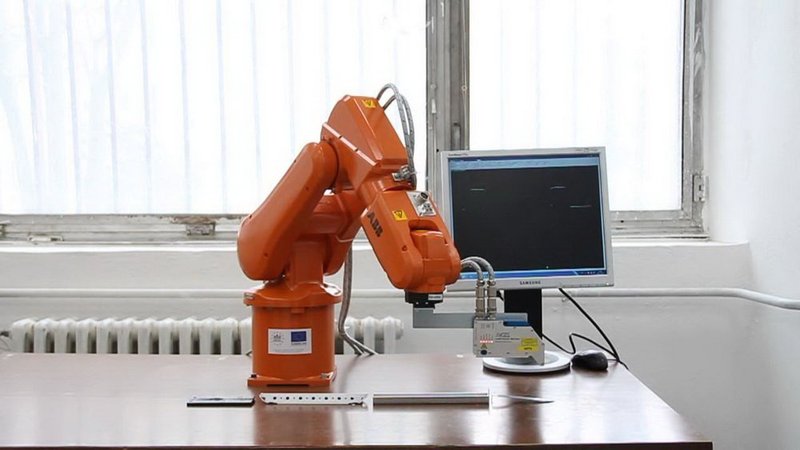
Credit: abb.com
Compact, fast, and high-precision industrial robots with low payload and working range — an efficient, reliable, budgetary, and fast payback solution. They are often available in Clean Room ISO 5 (Class 100) versions.
20–80 kg

Credit: abb.com
These are high-performance, general-purpose robots optimized for repetitive fast operations. Robots of this type make it possible to create more compact production halls with an increased density of device assemblies and a consistently high quality of work.
80–300 kg

Credit: abb.com
These are designed for manufacturing environments that might be too harsh for standard robots and equipment. Robots of this type are distinguished by reduced wear, high reliability, ease of setup and control, and extended preventive maintenance intervals.
300–1000 kg

Creddit: abb.com
This type is ideal for heavy duty applications regardless of the industry. Typical applications include handling heavy fixtures and objects, turning car bodies, handling parts in a foundry or forging, loading and unloading machines, and moving goods in warehouses.
1000–3000 kg

Credit: fanucamerica.com
These real giants can easily and quickly handle the heaviest loads. They can be used for loading and unloading operations, moving the heaviest parts of machines, ships or locomotives with high precision. A wide range of working tools allows you to achieve high efficiency at a reasonable cost.
Case studies
Delta robots in the production of pancakes

Credit: abb.com
High-speed automated pancake packing (450 pieces per minute) at Honeytop Specialty Foods Ltd. with the ABB IRB 360 FlexPicker robots. The use of the machines allowed for a 20% increase in speed even compared to the most efficient workers, significantly reduced packaging time, increased safety in production, reduced product losses, and increased business profitability.
Notice how neatly the robot is laying out the pancakes that have fallen on top of each other — this is the work of the pattern recognition system integrated in the robot.
The flexibility of programming allows you to freely change the number of pancakes in the package.
A robotic arm for complex welding inside a pipe

Credit: ljwelding.com
Task
A contract was awarded to a pipe seller in Mexico that required multiple welding processes. First, it was necessary to make welded baffles along the inner long seam of a pipe with a diameter of 46 cm up to 5 meters in length. Welding the baffle inside the pipe by hand, with a worker in a confined space, was time-consuming, inconvenient, and unsafe for the worker. The customer also required an arc welding process for the outer girth welds. Finally, he had a limited time and a tight budget, so he commissioned to design and build a MIG + SAW welding positioner with both functions built into one machine.
Solution
Customized design and engineering including custom designed narrow head MIG system and welding chamber.
Controls for SAW + MIG integration, camera system, column and boom manipulators. The result was a single dashboard that included all the necessary functions.
Equipment specifications:
- specialized column and rod with a retractable mast;
- one end of the rod is equipped with a welding positioner with an auxiliary arc system, which is supplemented by the supply and elimination of excess flux;
- the opposite end of the CaB manipulator is equipped with a specially designed narrow head MIG welding system and an arc welding chamber.

Credit: ljwelding.com
Result
The customer does not need two separate welding stations.
Thanks to the specialized MIG system with a narrow head, it is no longer necessary to send the welder into a confined space, and all welding can be done from the outside of the part. Welding is carried out in automatic mode.
Round outside welds made with the arc system have a higher quality and stronger weld bead than "handheld" MIG or TIG ones.
A robotic welding complex for car bodies in the Volvo concern

Tasks
- Increase the productivity of Volvo cars, improve product quality.
- Increase the flexibility of production lines for the release of various new models.
- Reduce the occupied area, reduce manual labor, increase labor safety.
- Optimize equipment life cycle.
Result
Increased productivity and uptime of production lines. Reduced maintenance time and increased equipment service life. A more compact arrangement allowed the installation of additional equipment. The participation of people in production was minimized, which made it possible to reduce both wage costs and the risk of accidents.
Volvo Cars recorded significant revenue growth in 2018, up 21% year-on-year.
A robotic arm to cut shapes from expanded polystyrene foam

Credit: specialpatterns.com.au
A robotic system for creating models from expanded polystyrene foam for the Australian company Special Patterns. Hot wire and milling are used as tools, removing dust around the work site. The robot employed is KUKA KR120 AA with the KUKA.CNC controller.
Spraying robots and the ITER international project

Credit: habr.com
Objective: to apply a copper coating on flat contact surfaces of electric aluminum busbars for the international project ITER (International Thermonuclear Experimental Reactor).
How it was done: Acton LLC built a robotic complex consisting of the OWEN controller, a spray chamber, the Kawasaki RS006L robot, and the Kawasaki E01 controller.
Examples of recommended equipment
UFactory xArm 6
Investing in the xArm is a solution to gain a competitive advantage and a high return on investment in the future. The advanced robot is able to increase productivity by more than 95%, reducing labor costs and multiplying production outputs.

The xArm 6 features a 5 kg payload and a repeatability of about 0.1 mm. The device sports human-like flexibility and is ideal for new industries such as service automation, AI research, and more. The robot is designed to move in space at any angle, which makes it a perfect tool for repetitive tasks. For instance, it can be used to unload objects from a 3D printer — after the print job is complete, the xArm detects it using the computer vision system and automatically unloads the models.
JAKA Zu 12
The Jaka Zu 12 is a collaborative robot with a manipulator range of up to 1327 mm and a payload of 12 kg.

Credit: jaka.com
Its integral connections simplify assembly and disassembly of the robot. Compact and lightweight, it can adapt to confined spaces, sports high accuracy, and meets all the necessary requirements for the implementation of numerous projects in an industrial environment.
The JAKA Zu 12 is characterized by a high payload and wide reach. It is suitable for replacing heavy manual loading and unloading, with flexibility and ease of use.
The recommended industries and applications for this cobot include automotive, advanced manufacturing, home appliances, food packaging, etc.
Bottom line
Industrial automation with robotics by all means result in increased productivity and profitability. Robotic manipulators by UFactory, KUKA, HANWHA, JAKA, Universal Robots, and other companies are used for the modernization of enterprises in the majority of industries. To pick the optimal set of robotic equipment for your particular purposes, contact Top 3D Shop specialists.
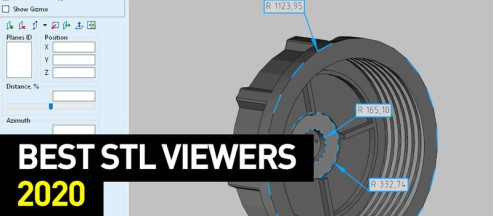
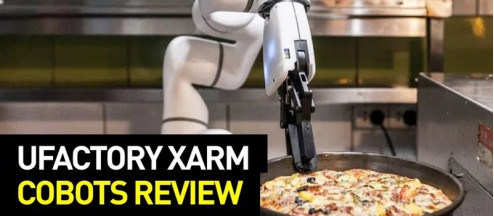
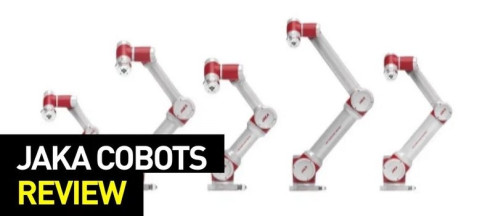
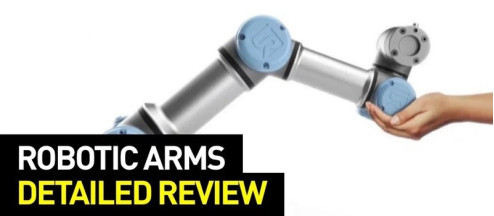

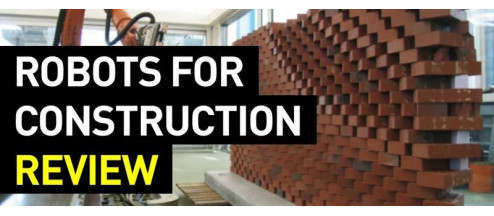
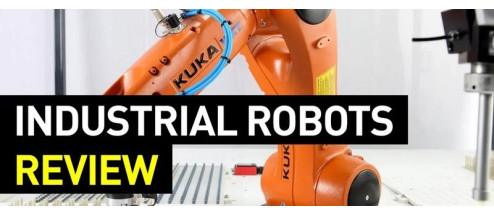

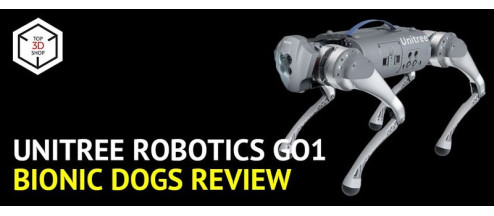
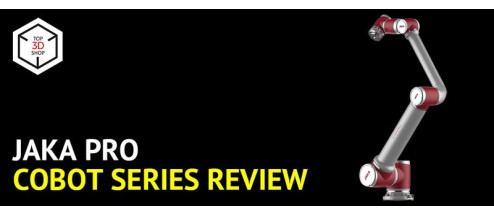
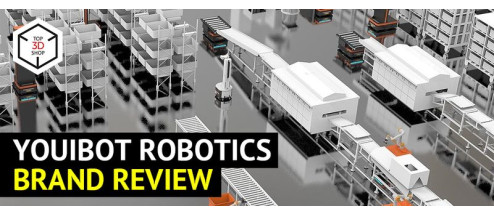
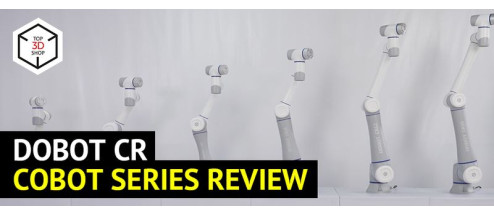

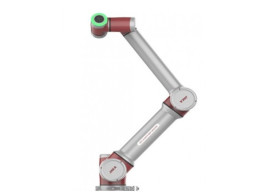
Write a comment